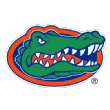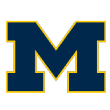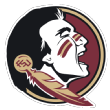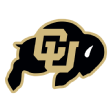A good coaching staff engages in a high level of self-scout. What are your own tendencies? Where are your blind spots? The best teams tend to be pretty good at spotting those things at the same speed that their opponents do.
A particularly high amount of self-scout happens during bye weeks. Considering Week 11 of the college football season was mostly a bye week of sorts for the national title race -- only two of the AP's top six teams played (Notre Dame and Florida), and they won by a combined 42 points -- I figured I would take a page out of the coaching handbook and look inward.
While each season features its share of out-of-nowhere stories that virtually no one saw coming -- in 2020, that would include the unprecedented dominance of Cincinnati and BYU, an 0-4 start for Penn State, etc. -- I wanted to look at a few items I was personally wrong about in the preseason, for both learning and mea culpa reasons.

I wasn't sure Florida QB Kyle Trask could lead an elite offense
I was pretty sure that while the Gators wouldn't have a Georgia-level defense, it would be worthy of a top-five or top-10 rating. I was struggling, however, to figure out if Trask was capable of the type of breakthrough required for Florida to make a big run. From my SEC East preview:
Your view of Florida's place in the national title race this fall is almost 100% determined by your view of Kyle Trask. ... Trask posted a 25-to-7 TD-to-INT ratio and finished 10th in the country in Total QBR. But he thrived at least partially because of the game plan. His passer rating was 169.6 on first down, 148.0 on second and 139.2 on third, and Florida ranked only 53rd in blitz downs success rate. When conditions were favorable, he thrived. When they weren't, he didn't. ... Will the Gators have enough going for them to make a run if Trask doesn't enjoy a Joe Burrow-like senior leap?
I guess the last question in that quote is moot, because if Trask hasn't gone Full Burrow, he has gone 90% Burrow.
Trask, first 6 games of 2020: 148-for-211 (70%), 2,171 yards, 28 TDs, 3 INTs, 93.9 Total QBR (third)
Burrow, first 6 games of 2019: 148-for-186 (80%), 2,157 yards, 25 TDs, 3 INTs, 93.1 Total QBR (fourth)
That's jarring. Burrow's completion rate was better, but that included a 44 for 51 sample against Georgia Southern and Northwestern State.
Now, the thing about going Full Burrow is that you have to continue improving; after all, Burrow's Total QBR improved to 95.6, a distant first, after the first six games. But Trask has been incredible so far, and he found a new level on Saturday against Arkansas.
Without leading receiver Kyle Pitts, the best tight end in the country, Trask took on an opportunistic Arkansas defense and gave it no mistakes to capitalize on, completing 23 of 29 passes for 356 yards and six touchdowns. Ten different Gators caught a pass, and without Pitts, the signal-caller leaned more heavily on Trevon Grimes (six catches, 109 yards, two touchdowns) and the combination of Xzavier Henderson and Keon Zipperer (five combined catches in the first five games, six on Saturday).
While I will forever pound my chest about having hyped Burrow as a breakout contender heading into 2019, I was tapping the brakes on Trask hype in 2020. My bad.

I was worried about Iowa's defense
Burly run game with a seasoned skill corps? Well-drilled upperclassmen littering a smart defense? If you squinted just right, it looked like this year's Iowa team was going to be just about the most Iowa team imaginable. For me, the biggest question came with the turnover in raw playmaking on defense. From my Big Ten West preview:
Linebacker Kristian Welch, safety Geno Stone and corner Michael Ojemudia were, along with [end AJ] Epenesa and [end Chauncey] Golston, among Iowa's top five havoc creators last year (TFLs, passes defensed, forced fumbles). They're mostly gone, with Golston as the only proven disruptor on the first string.
The Hawkeyes rose to sixth in defensive SP+ last season, their best showing since ranking fifth in 2013. But with the loss of players like Epenesa and Ojemudia, it was fair to predict regression.
They're currently third in defensive SP+. Whoops.
Against teams not named Iowa, the Hawkeyes' first four opponents are averaging 28 points per game. Against Iowa, they averaged 15. Minnesota had scored 85 points in its prior two contests before hosting Iowa on Friday night and getting throttled. The Hawkeyes sacked Tanner Morgan four times and picked him off twice. They allowed just 111 yards in 30 first-half snaps, easing to a 14-0 halftime lead before finally laying the hammer down in the fourth quarter. Minnesota didn't break the shutout until the final 15 seconds of the game.
Disruption levels up front are solid -- Daviyon Nixon is averaging 1.8 tackles for loss per game (17th in FBS), and Iowa as a whole is averaging 2.8 sacks (33rd) -- and the secondary has allowed a 100.7 passer rating (sixth). While the Hawkeyes haven't faced a murderers' row of potent passing attacks, they haven't feasted on nonconference cupcakes, either.
SP+ ranks Iowa 13th overall and third in the Big Ten. The Hawkeyes lost two funky games by a combined five points, but they have won the past two by a combined 70. The losses will make it hard for them to catch up to Wisconsin in the division race, but they'll be favored in their next three games, before they host the Badgers on Dec. 12. If Wisconsin slips up to anyone else between now and then, the Big Ten West could have a hell of a sleeper.

I wasn't worried about Michigan's defense
Beginning with his 2015 Boston College defense, Don Brown ripped off a run few coordinators will ever experience. BC ranked fifth in defensive SP+ in 2015, then his first Michigan defense ranked third and nearly powered a Big Ten title run and College Football Playoff bid. The Wolverines slipped slightly in the following years -- fifth in 2017, ninth in 2018, 11th in 2019 -- but that's still better than most.
In a time when lots of teams play zone or bend-don't-break defense, Brown wants to play man and just break you. But that works a lot better when you've got guys who can play man defense. And rush the passer. And disrupt something, anything at all.
Michigan's 49-11 blowout loss to Wisconsin brought with it a series of ignominious stats and tidbits. According to ESPN's Stats & Information data:
It was the Wolverines' worst home loss since a 38-0 defeat against Ohio State in 1935.
Their 28-0 halftime deficit was their worst in Michigan Stadium history.
The first half was their fifth consecutive without a sack or a takeaway. No Big Ten team had pulled that off in 15 years.
The sackless streak ended in the third quarter, when Carlo Kemp brought down Graham Mertz (a small consolation since Wisconsin was up 28-3 at the time), but the Wolverines haven't forced a turnover since a late interception in the first game of the year. They're allowing a 139.1 passer rating; they haven't allowed above a 127 since 2010. They're down to 26th in defensive SP+, and that's only because of preseason projections; filter those out completely and they'd rank in the 60s.
In 2016, Michigan's defensive depth chart featured 16 players who would get drafted from 2017 to 2020. Nine of them were selected in the first three rounds. At the moment, Mel Kiper Jr.'s 2021 draft rankings include just one Wolverines defender: defensive end Kwity Paye. (Paye had two sacks against Minnesota, but he has barely been heard from since.)
Despite recruiting rankings that have remained mostly solid -- ESPN ranked Jim Harbaugh's recruiting classes between sixth and 11th four times in five years from 2016 to 2020 -- neither the stats nor the eyeballs see as much star talent on the field this year. Or at least, the talent that exists doesn't have enough experience to play at a high level yet. It's making Brown's defensive aggression backfire quite a bit, and combined with an inexperienced offense making even more mistakes than usual, Michigan is in increasingly dire straits at the moment.

I thought Florida State would at least be decent
At any given time, there are a few underachieving blue bloods out in the wild, and especially for the ones that still recruit at mostly high levels -- your USCs, your Texases, your Michigans, your Florida States -- the offseason is forever a good time to talk yourself into recent star recruits and potential, and ignore, well, recent history.
I felt I was pretty measured with my Florida State expectations this offseason. SP+ projected the Noles 27th because of the combination of decent experience and, yes, recent recruiting. I certainly saw that as at least a possibility, especially considering how well new head coach Mike Norvell had performed at Memphis. From my ACC Atlantic season preview this summer:
Norvell inherits a team that is now on its third coaching staff (and fourth offensive coordinator) in four years, but he and offensive coordinator Kenny Dillingham should have a lot of fun with versatile talents like receivers Tamorrion Terry and D.J. Matthews and running back (and Texas A&M transfer) Jashaun Corbin. ...
Youth and injury conspired against the 2019 [defense]. ... Experience, combined with full-strength versions of [tackle Marvin] Wilson, end Joshua Kaindoh and safety Jaiden Lars-Woodbey, could result in solid improvement for [defensive coordinator Adam] Fuller, who followed Norvell to town. Sophomore linebacker Amari Gainer could be a star too.
Matthews transferred to Indiana. Terry caught 23 balls and left the team. Corbin is averaging a decent but unexceptional 5.1 yards per carry. Wilson had two TFLs in six injury-plagued games and was lost for the season. Kaindoh is averaging just 1.5 tackles per game. Gainer and Lars-Woodbey have been solid, but the team has had far fewer star performances than expected; meanwhile, four different QBs have thrown more than 20 passes, the surest sign of total instability.
FSU is 2-6 following a 38-22 loss to NC State that wasn't as close as the score suggests. It was the third straight rock-bottom performance following an unlikely upset of North Carolina. The Seminoles are 89th in SP+, ahead of only Syracuse (106th) within the conference. All the turnover and instability of recent years created an unsalvageable team culture; and even if it turns out that Norvell is the right guy for the job, it appears it's going to take him a while to turn this thing around.

I didn't think Colorado had any hope
I was quite skeptical of both parties involved in the Mel Tucker trade. In February, Tucker left Colorado to become Michigan State's head coach after only one mediocre year in Boulder. CU responded by hiring former UCLA head coach Karl Dorrell, whose only college experience in the past 13 seasons was one disastrous year as Vanderbilt's offensive coordinator.
From a Pac-12 piece the week of the Buffaloes' season debut:
Sam Noyer completed 21 of 41 passes with two interceptions in two years as a Colorado backup, then moved to backup safety in 2019. New head coach Karl Dorrell and offensive coordinator Darrin Chiaverini decided he was the best option to lead the offense in 2020. Receiver K.D. Nixon is about the only proven entity around him. This is not a great recipe for success.
Nixon has yet to see the field this year, so the Buffaloes have even fewer proven entities than I expected. They're dreadful, then, right? Wrong!
Michigan State certainly hasn't thrived out of the gates with Tucker; the Spartans are 1-3 and have lost their past two games by a combined 73-7.
But Colorado is 2-0, in part because of a couple of holdovers. Chiaverini, originally brought to Boulder by then-head coach Mike MacIntyre in 2016 and finally given solo coordinator duties by Dorrell, has put together a couple of fantastic game plans. And Noyer, brought back to the quarterback position, has held his own. He has completed 64% of his passes at 14.6 yards per completion, while rushing 20 times for 108 yards, not including a single sack. Noyer is 17th in the nation in Total QBR, ahead of far more touted signal-callers such as USC's Kedon Slovis and UNC's Sam Howell.
Running back newcomer Jarek Broussard has 58 carries for 308 yards (5.3 per carry), which, combined with Noyer's own run prowess, has opened things up downfield. Sophomore wide receiver Dimitri Stanley has averaged 16 yards per catch on 12 receptions, and tight end Brady Russell has averaged 15.4 on five catches; they averaged 10.1 and 9.4 per catch, respectively, the past two seasons.
It's early, of course, and neither of the Buffaloes' two early-season victims, Stanford or UCLA, tops 70th in defensive SP+ or 59th in overall SP+. Colorado bolted to big midgame leads in both contests then had to fend off collapses late. This is not me proclaiming the Buffs a Pac-12 contender. But it is me acknowledging the Buffs have already found more offensive answers than I expected from them in 2020.
While we're at it, what has SP+ been most wrong about in 2020?
We obviously don't have a full picture of the college football landscape at the moment, with some teams nearing the completion of their schedule while others have just started (and one, poor Utah, still trying to get started). But we can still note the teams that have seen their respective ratings shift the most this year, for better or worse.
Largest improvement in overall SP+
Here are the teams that have seen their SP+ ratings rise the most as compared to preseason projections.
1. Liberty (up 18.2 adjusted points per game, now 39th overall)
2. Coastal Carolina (up 17.9 PPG, now 37th)
3. BYU (up 16.5 PPG, now seventh)
4. Marshall (up 15.3 PPG, now 30th)
5. Nevada (up 11.6 PPG, now 57th)
In all, nine teams have seen their ratings rise by at least 10 points per game, though only one, West Virginia (now 33rd), is a Power 5 conference team.
Largest regression in overall SP+
With the Power 5 all employing conference-only schedules or allowing for only one nonconference game, a lot of Power 5 teams have quickly found themselves underwater. I figure some of this is simply due to my own personal struggles with trying to properly calibrate a schedule with almost no connectivity. It's possible that Power 5 teams are falling too far and mid-majors rising too high. Still, without cupcakes on the schedule, there's also no question that some teams are very much struggling to figure themselves out.
Here are the teams that have seen their SP+ ratings fall the most as compared to preseason projections.
1. Florida State (down 16.7 adjusted points per game, now 89th overall)
2. Tennessee (down 13.9 PPG, now 63rd)
3. LSU (down 12.4 PPG, now 42nd)
4. South Carolina (down 11.7 PPG, now 80th)
5. Kentucky (down 10.7 PPG, now 55th)
Four SEC teams! (And yes, there could be Big Ten and/or Pac-12 teams on this list too when they've played enough games and had enough of a chance to stumble.)
Largest improvement in offensive SP+
1. BYU (up 10.3 PPG, to eighth in offensive SP+)
2. Liberty (up 9.2 PPG, now 26th)
3. Coastal Carolina (up 8.9 PPG, to 30th)
4. Virginia Tech (up 8.1 PPG, to 13th)
5. Wake Forest (up 8.1 PPG, to 64th)
Virginia Tech is 4-4 and reeling at the moment, having lost three games by a total of 11 points in the past four weeks. But it's hard to blame an offense that has scored 35-plus points in six of eight games.
Largest regression in offensive SP+
1. Baylor (down 8.9 PPG, now 87th in offensive SP+)
2. Mississippi State (down 8.2 PPG, now 88th)
3. Kentucky (down 6.2 PPG, now 85th)
4. Florida State (down 6.0 PPG, now 82nd)
5. Texas (down 6.0 PPG, now 23rd)
If you're looking for a smidgen of hope in Starkville, I offer this: The only time a team coached by Mike Leach has ranked lower than 60th in offensive SP+ was in 2012, when his first Washington State offense ranked ... 88th. The Cougars were 41st in his second year, and they were up to sixth last year before Leach left for Mississippi State.
Largest improvement in defensive SP+
1. Army (down 10.0 PPG allowed, now 44th in defensive SP+)
2. Liberty (down 9.1 PPG, now 64th)
3. UTEP (down 9.1 PPG, now 114th)
4. Coastal Carolina (down 8.9 PPG, now 60th)
5. West Virginia (down 8.6 PPG, now 18th)
Oklahoma State has justifiably gotten a lot of headlines for what it's done defensively this year, but let's not ignore what WVU has done. The Mountaineers are allowing under 18 (real) points per game despite firing their defensive coordinator in late July.
Largest regression in defensive SP+
1. South Carolina (up 13.1 PPG allowed, now 76th in defensive SP+)
2. Florida State (up 10.6 PPG, now 88th)
3. Florida (up 9.8 PPG, now 34th)
4. Ole Miss (up 9.7 PPG, now 98th)
5. LSU (up 9.3 PPG, now 69th)
Honestly, I probably should have written a section about South Carolina above. I thought this was going to potentially be a top-30 caliber unit, but the Gamecocks have allowed at least 48 points in three straight games.
